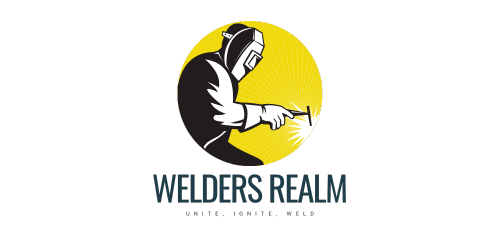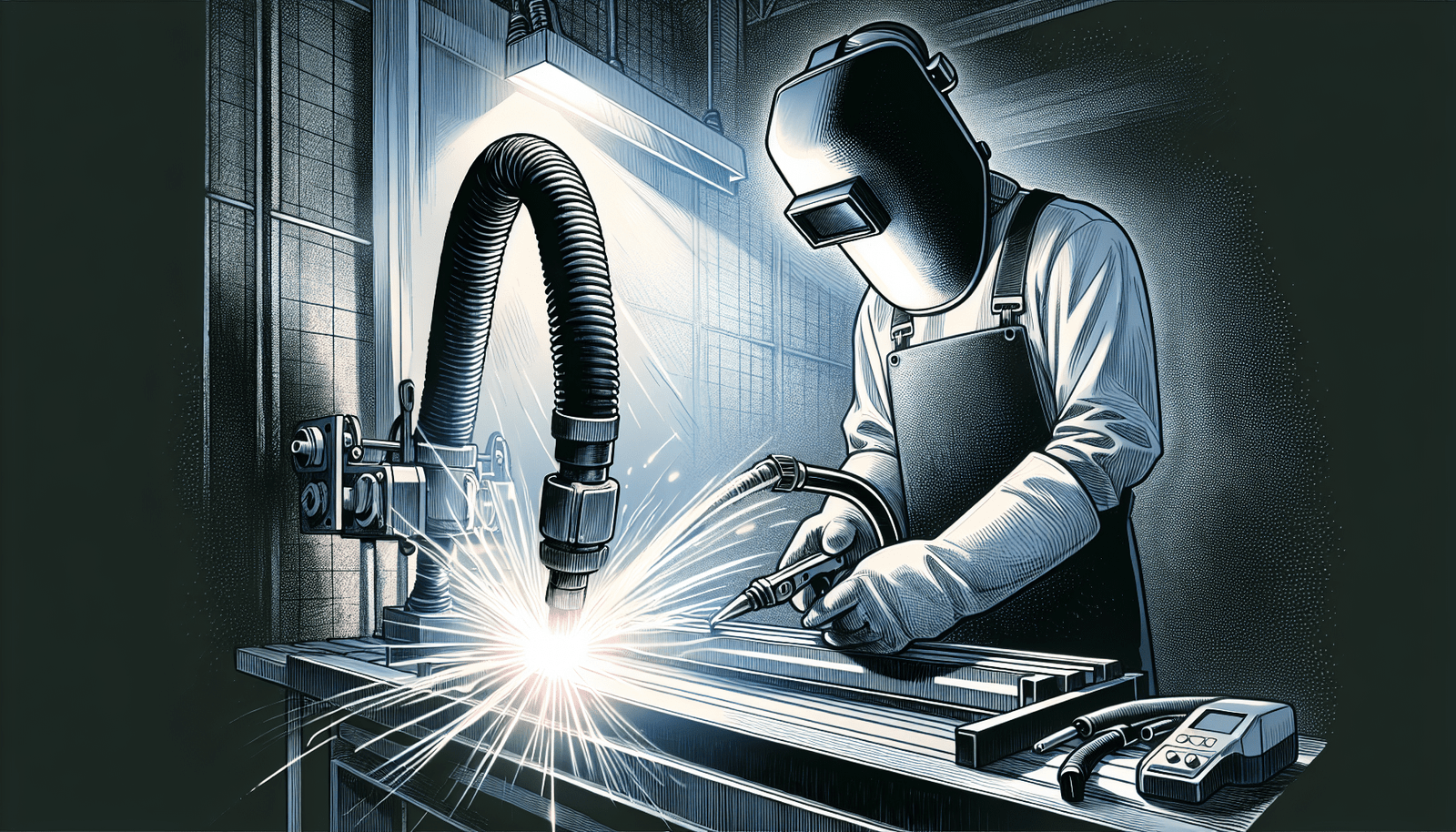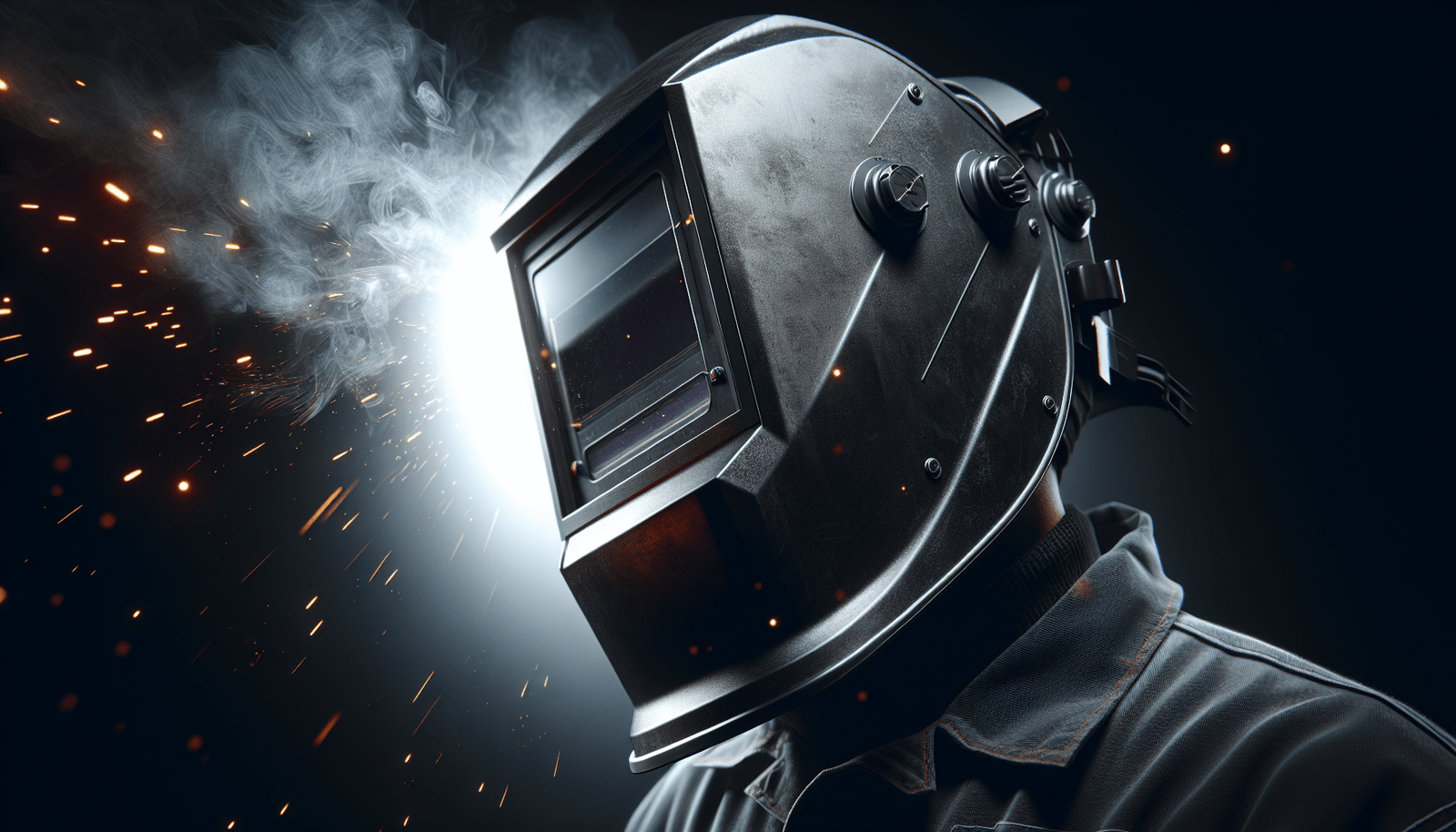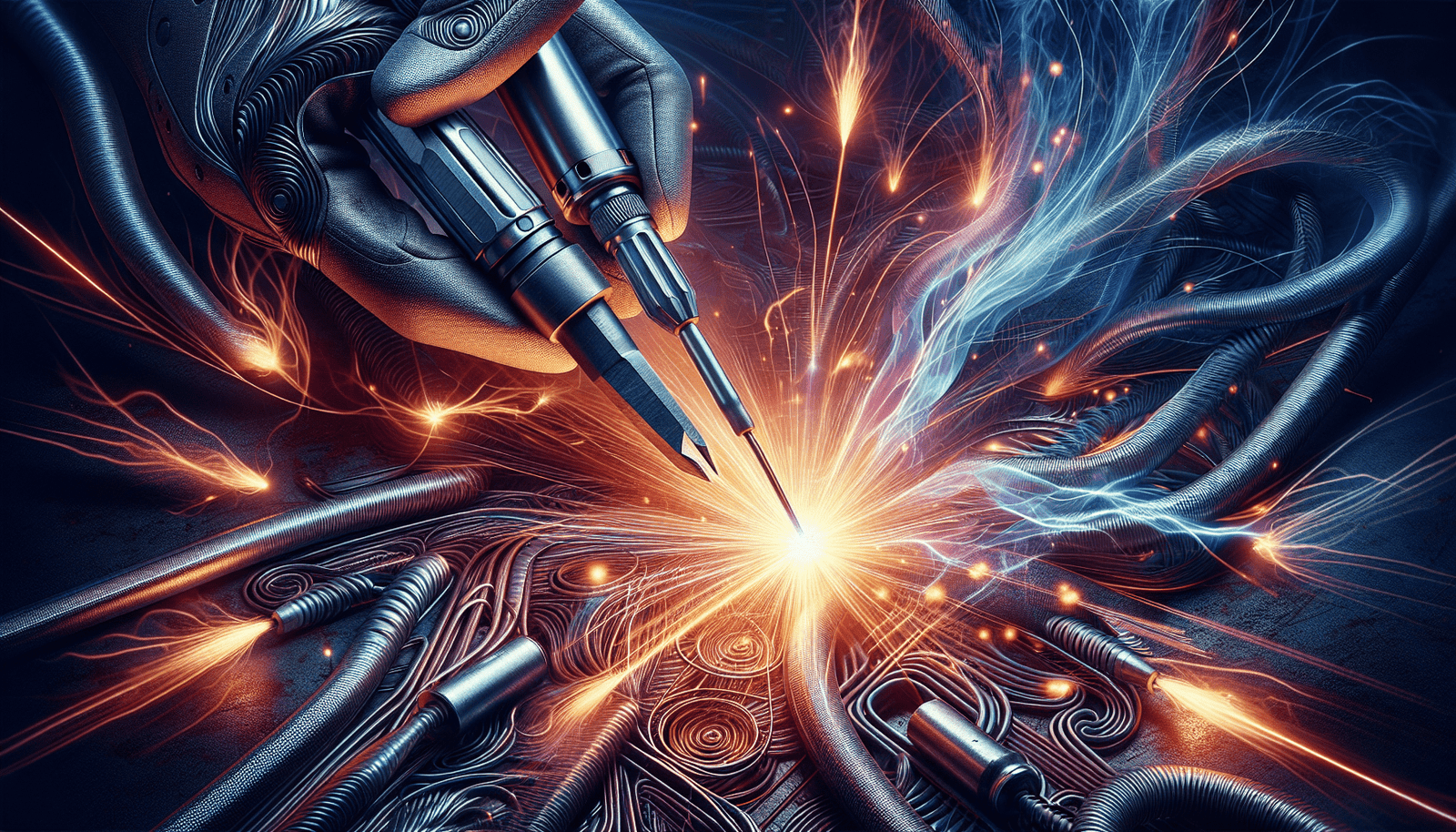If you’re looking to improve the air quality in your welding environment, using a welding fume extractor arm might be just the solution you need. These arms are specially designed to remove harmful fumes and particles from the air, keeping you and your workspace safe and clean. In this article, we will guide you through the proper use of welding fume extractor arms, ensuring that you get the most out of this valuable tool. Whether you’re new to welding or a seasoned professional, understanding how to effectively use these extractor arms is crucial for a healthier and more efficient workspace. So, let’s get started and learn how to properly use welding fume extractor arms for cleaner air.
Understanding the Importance of Welding Fume Extractor Arms
When it comes to welding, safety should always be a top priority. One crucial element that often gets overlooked is the presence of welding fumes. These fumes can be harmful to both the welder and anyone else working in the environment. This is where welding fume extractor arms come into play. These arms are designed to remove and filter out welding fumes, ensuring cleaner air for everyone in the vicinity.
Why welding fume extractor arms are necessary
Welding processes produce various hazardous fumes and gases, including metal oxides, ozone, and hazardous gases like carbon monoxide and nitrogen dioxide. Inhalation of these fumes can lead to serious health issues such as lung damage, respiratory illnesses, and even cancer. Therefore, it is crucial to implement measures to control and eliminate these fumes.
Welding fume extractor arms are necessary because they effectively capture and extract the fumes directly from the source. By using these extractor arms, you can significantly reduce the concentration of welding fumes in the working environment, making it safer and healthier for everyone involved.
Link between welding fumes and health hazards
Inhaling welding fumes can have severe health consequences. The metal fumes, such as aluminum, copper, and zinc, can cause metal fume fever, which presents flu-like symptoms such as fever, chills, muscle aches, and fatigue. Prolonged exposure to welding fumes can also lead to chronic bronchitis and other respiratory issues.
Moreover, certain metals used in welding, such as cadmium, chromium, and nickel, have been classified as carcinogens by health organizations. An increased risk of lung, nasal, and laryngeal cancers has been associated with long-term exposure to these substances. Protecting yourself and others from these harmful effects is essential, and welding fume extractor arms play a vital role in achieving that.
Benefits for air cleanliness in the working environment
Clean air in the working environment is essential for the well-being and productivity of the workforce. By using welding fume extractor arms, you can improve the air quality by effectively removing hazardous welding fumes and gases. This not only ensures the safety of the workers but also reduces the risk of respiratory illnesses and other related health issues.
Furthermore, cleaner air contributes to a more pleasant and comfortable working environment. Welding fume extractor arms also help prevent the accumulation of fumes and particles on surfaces, equipment, and machinery, reducing the need for frequent cleaning and maintenance.
Types of Welding Fume Extractor Arms
Welding fume extractor arms come in various types to suit different needs and environments. Understanding the different types can help you choose the right one for your specific requirements.
Types based on flexibility
Stationary Arms: These arms are fixed in position and provide a stable extraction solution. They are ideal for dedicated workstations where welding is regularly performed in the same area.
Articulating Arms: These arms offer flexibility and maneuverability. They consist of multiple adjustable segments, allowing for precise positioning of the extraction hood. Articulating arms are suitable for applications that require the extraction hood to be moved to different locations.
Types based on extraction power
Low-Volume Arms: These arms are designed for light-duty welding applications. They have a lower extraction capacity and are typically used in small workshops or for occasional welding tasks.
High-Volume Arms: These arms are more robust and have a higher extraction capacity. They are suitable for heavy-duty welding applications or environments where multiple welding stations are in operation simultaneously.
Choosing the right type for your needs
When selecting a welding fume extractor arm, consider the specific requirements of your welding operations. Factors such as the type of welding being performed, the size of the workspace, and the frequency of welding tasks should be taken into account. Additionally, consult with a reputable supplier or manufacturer who can provide guidance and help you choose the most suitable extractor arm for your needs.
Positioning the Welding Fume Extractor Arm
Proper positioning of the welding fume extractor arm is crucial for its effectiveness in capturing welding fumes. Consider the following guidelines when positioning the arm in your workspace.
Determining the optimal placement
Position the welding fume extractor arm as close to the welding source as possible. This ensures that the fumes are captured immediately, preventing them from spreading throughout the working environment. Place the extraction hood as close to the welding arc as practical, without obstructing the welder’s line of sight.
Adjusting for different welding projects
Different welding projects may require adjustments in the positioning of the extractor arm. For example, when performing overhead welding, the arm may need to be repositioned above the weld rather than beside it. Take into account the specific welding techniques and positions used in your projects and make the necessary adjustments to ensure effective fume extraction.
Maximizing extraction effectiveness
To maximize the effectiveness of the welding fume extractor arm, ensure that the hood is properly aligned with the welding area. Make any necessary adjustments to ensure proper capture of the fumes. Regularly inspect and clean the arm, including the hood, to remove any obstructions that could hinder the extraction process.
Proper Maintenance of Welding Fume Extractor Arms
To ensure optimal performance and longevity of your welding fume extractor arm, regular maintenance is essential. Here are some key maintenance practices to follow.
Regular checks and cleaning
Perform routine inspections of the extractor arm to check for any signs of damage, wear, or clogging. Clean the arm, including the hood, regularly to remove any accumulated dust, debris, or welding residue. Use mild cleaning agents and ensure all components are dry before reassembly.
Signs of damage and when to replace components
Inspect the extractor arm for any signs of damage, such as cracks, loose fittings, or worn-out components. If any part is damaged beyond repair or significantly impairs the arm’s functionality, it should be replaced promptly. This includes worn-out extraction hoods, filters, and hoses.
Importance of regular maintenance in prolonging lifespan
Regular maintenance of welding fume extractor arms is crucial for prolonging their lifespan and ensuring their continued effectiveness. By properly maintaining the arm, you can avoid costly repairs or premature replacements. Additionally, regular maintenance helps to uphold the safety standards and performance of the arm, providing a clean and healthy working environment.
Operating Guidelines for Welding Fume Extractor Arms
Operating a welding fume extractor arm requires understanding its operating principles and mastering the controls. Here are some guidelines to ensure safe and efficient operation.
Understanding the operating principles
Familiarize yourself with the operating principles of your specific welding fume extractor arm. Read the manufacturer’s instructions and guidelines to understand the arm’s capabilities, limitations, and any recommended operating procedures.
Mastering the controls
Become proficient in operating the controls of the welding fume extractor arm. This may include adjusting the extraction flow rate, fan speed, or positioning of the extractor hood. Practice using the controls to achieve the desired extraction efficiency and ensure proper functionality of the arm.
Safety precautions while operating
Always follow standard safety procedures while operating the welding fume extractor arm. This includes wearing appropriate personal protective equipment (PPE) such as gloves, safety glasses, and a welding helmet. Additionally, ensure proper grounding of the welding equipment to prevent electrical hazards and maintain a safe working environment.
Efficiency Tips for Using Welding Fume Extractor Arms
To maximize the efficiency of your welding fume extractor arm, consider the following tips based on experience and best practices.
Efficiency tweaks based on experience
Experiment with different extraction settings and arm positions to find the optimal configuration for your specific welding tasks. Adjusting the extraction flow rate, fan speed, or hood position can significantly improve the capture efficiency and effectiveness of the arm.
Understanding airflow for better results
Understanding the airflow dynamics in your workspace can help you position the welding fume extractor arm strategically. Consider the direction of natural airflow and ensure that the extractor arm’s placement complements it, enhancing the extraction efficiency.
Balancing extraction power and energy consumption
Strike a balance between extraction power and energy consumption. Adjust the extraction fan speed or flow rate to match the required level of fume capture while minimizing energy usage. This can help reduce operating costs while maintaining an optimal working environment.
Troubleshooting Common Issues with Welding Fume Extractor Arms
Sometimes, welding fume extractor arms may encounter issues that affect their performance. Here are some common problems and troubleshooting tips to address them.
Dealing with reduced extraction efficiency
If the extraction efficiency of the arm seems to be reduced, start by checking for any obstructions in the hood or filter. Clean these components thoroughly and ensure they are not clogged. Additionally, inspect the hoses and connections for any leaks or blockages that may compromise the extraction efficiency.
Addressing mechanical issues
Mechanical issues such as loose fittings, damaged components, or worn-out parts can hinder the arm’s functionality. Inspect the arm for any signs of mechanical problems and address them promptly. Tighten loose fittings, replace damaged parts, and ensure all components are properly aligned for optimal performance.
Solving electrical problems
Electrical issues can disrupt the operation of welding fume extractor arms. Check the power supply, cords, and connections to ensure they are functioning correctly. If there are any electrical faults or malfunctions, consult a qualified electrician or the arm’s manufacturer for assistance.
In-depth look at Different Filters used in Welding Fume Extractor Arms
Filters play a vital role in capturing and removing hazardous particles and fumes from the extraction air. Here are some common types of filters used in welding fume extractor arms.
Types of filters
Particle Filters: These filters trap and retain solid particles, such as welding fumes, dust, and other airborne contaminants. They are often made of high-efficiency particulate air (HEPA) or other specialized media designed to capture fine particles.
Gas and Odor Filters: These filters are designed to remove gases and odors from the extracted air. They utilize activated carbon or other adsorbent materials to attract and trap gases, preventing them from being released back into the environment.
Knowing when to replace the filters
Regularly inspect the filters to ensure they are functioning effectively. Particle filters may become clogged over time, reducing their efficiency. Gas and odor filters may reach their saturation point, requiring replacement to maintain their effectiveness. Consult the manufacturer’s guidelines to determine the recommended replacement intervals for your specific filters.
Enhancing air cleanliness using different filters
Depending on the nature of your welding processes and the types of contaminants you encounter, you may need to use different filters to enhance air cleanliness. Combining particle filters with gas and odor filters can provide comprehensive filtration, ensuring the removal of both solid particles and hazardous gases. Consult with the supplier or manufacturer to determine the most suitable filter combination for your welding fume extractor arm.
Installation Guide for Welding Fume Extractor Arms
Proper installation of welding fume extractor arms is essential for their optimal functioning. Follow these guidelines when installing the arm in your workspace.
Guidance on proper installation
Refer to the manufacturer’s installation instructions and guidelines to ensure proper installation of the welding fume extractor arm. Follow the recommended steps for mounting the arm securely to the designated support structure, such as a wall or ceiling.
Safety measures during installation
Prioritize safety during the installation process. Secure the arm in a position that provides adequate coverage of the welding area while maintaining a safe distance from the welder. Avoid obstructing walkways or workspaces with the arm or its components. Use appropriate equipment and personal protective gear when installing the arm.
Things to consider while choosing the installation location
When selecting the installation location for the welding fume extractor arm, consider factors such as the proximity to the welding area, accessibility for maintenance and repairs, and any space constraints in the workspace. Ensure that the chosen location allows for optimal positioning of the arm to achieve effective fume extraction.
Advancing Industrial Air Cleanliness via Better Welding Practices
The use of welding fume extractor arms contributes to better air cleanliness in industrial settings. By mitigating the health hazards associated with welding fumes, these arms play a vital role in enhancing workplace safety and overall environmental preservation.
Role of welding fume extractor arms in industry-wide air cleanliness
Welding fume extractor arms are a key component in maintaining and enhancing air cleanliness in industrial environments. By effectively capturing and removing welding fumes, these arms help prevent their dispersion into the surrounding air, reducing the risk of exposure for both workers and the environment.
Positive impact on worker health
The implementation of welding fume extractor arms positively impacts worker health and well-being. By minimizing exposure to hazardous welding fumes, these arms help prevent respiratory illnesses, reduce the risk of long-term health issues such as cancer, and create a safer and more productive work environment.
Contribution towards overall environmental preservation
In addition to protecting worker health, welding fume extractor arms contribute to overall environmental preservation. By removing and filtering harmful welding fumes and particles, these arms prevent their release into the atmosphere, minimizing the impact on air quality and reducing environmental pollution. This helps create a cleaner and more sustainable environment for all.
In conclusion, welding fume extractor arms are essential tools for ensuring a safe and healthy working environment in welding operations. By understanding their importance, selecting the right type, positioning them correctly, performing regular maintenance, and employing proper operating guidelines, welding professionals can maximize the effectiveness of these arms in capturing and removing hazardous welding fumes. With their positive impact on worker health and their contribution towards overall environmental preservation, welding fume extractor arms play a crucial role in advancing industrial air cleanliness.



